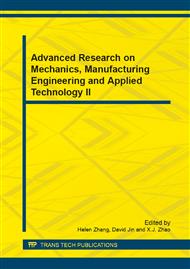p.259
p.263
p.267
p.272
p.277
p.283
p.287
p.292
p.296
Soot Concentration Interference Measurement System Caused by Multidispersion Soot Different Position
Abstract:
One of the pollutant emission parameters is soot emission concentration. The light intensity scattering method is commonly used in monitoring the soot emission concentration. The distance between the sensor and the soot is different; the sensor acceptance scattering light angle range of the different position multidispersion soot is different and the ratio of the soot scattering light intensity and the total light intensity is different. So it can decreases soot emission concentration accuracy. To improve soot concentration accuracy, soot concentration interference caused by the multidispersion soot different position is studied in this paper. Numerical simulation results show that the different parameters multidispersion soot position can increase soot concentration error. Solution method on the multidispersion soot different position is brought out. The interference measurement system caused by the different multidispersion soot position is designed and the experimental results show that the measurement system can on-time measure the soot position interference and decrease the soot concentration measurement error.
Info:
Periodical:
Pages:
277-280
Citation:
Online since:
April 2014
Authors:
Keywords:
Price:
Сopyright:
© 2014 Trans Tech Publications Ltd. All Rights Reserved
Share:
Citation:


